A truly global network: how tech companies plan to make the internet ubiquitous

Are you used to taking the Internet for granted? Some 4 billion people can only envy you. According to of the UN, 57% of the world's population still do not have regular access to the Internet. The problem first of all concerns people living in poor countries and territories outside the city limits, where it is technically difficult or too expensive to build a traditional infrastructure. From a business perspective, the IT giants are missing out on a huge chunk of the market pie, if not the most nutritious, for sure. To turn even more people into customers, big tech companies are hard at work figuring out new ways to deliver the internet. A vanguard of sorts has already formed, including Alphabet, Facebook, OneWeb and SpaceX with their ambitious ideas. Balloons, satellites, lasers, and drones are being used.
Alphabet
Alphabet, the parent company of Google, is gradually implementing a plan called Project Loon. As part of the project, the organization is launching specially-equipped balloons into the stratosphere to create wireless Internet coverage. Eventually, after launching a sufficient number of devices, they should cover the entire planet, starting with the areas inaccessible to ground communications: mountains, archipelagos and others.
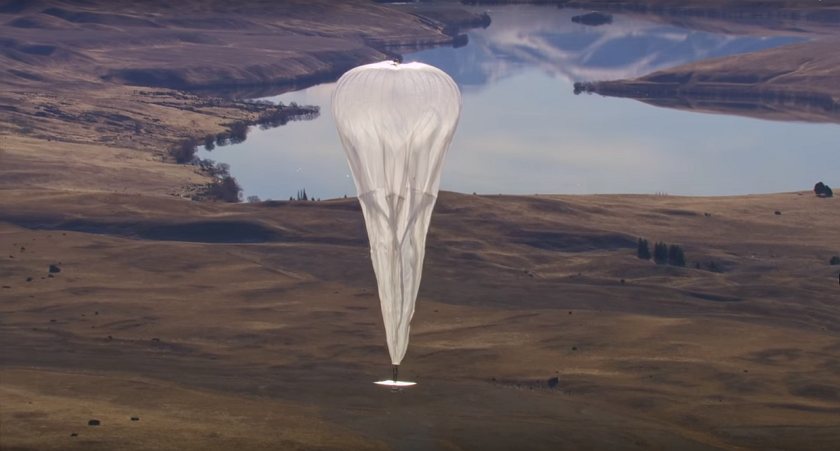
One of the balloons launched under the Project Loon initiative. Photo: Alphabet
Balloons with inflatable shells measuring 15 by 12 meters drift above 18 kilometers above the ground, where no planes fly and where most weather conditions do not apply. Clever software analyzes wind behavior and then, by adjusting the height of the balloons, steers them into the right air currents. As a result, the vehicles stick to their planned flight paths. The support service records the GPS coordinates of each balloon and makes replacements when it comes down to the ground after wear and tear or in case of equipment failure. Alphabet creates special zones for safe landings, but also equips the vehicles with parachutes for emergency situations. According to tests, on average one balloon can stay in the air without maintenance for about 100 days.
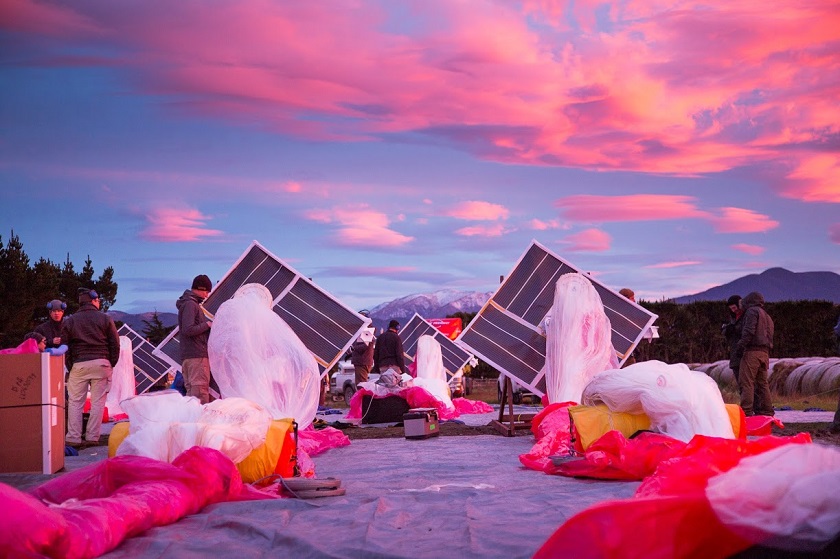
Project Loon team diligently prepares balloons for launch. Photo: Alphabet
Each balloon carries several transceivers on board. One of them serves to communicate with end-user devices using the LTE standard, while the second serves for high-speed data exchange between the balloon and the providers' equipment. The interaction of the two wireless channels enables users to access the Internet, with the balloons transmitting signals to each other using antennas to form a distributed network. For reliability, all devices are connected to redundant radio equipment, which is activated in case of failure of the main one. During the day, the electronics work thanks to solar panels; they also charge the lithium-ion batteries that power the equipment at night.
The balloons move mainly with the help of wind, which saves energy significantly.
Alphabet is going to partner with telecommunications companies in different countries to use their frequency bands to transmit signals through the balloons. The organization believes it will be able to provide customers with speeds comparable to the current capabilities of LTE/4G networks carried out by ground-based methods. And that, by the way, is 10-20 Mbps. By the way, Alphabet has developed special antennas, which can be installed in homes to improve the signal. According to the company, each antenna provides coverage within a 20 km radius and can serve hundreds of users simultaneously.

Antenna for receiving signal from balloons and the youngest user. Photo: Alphabet
The announcement of Project Loon took place in June 2013. It all began with the launch of 30 balloons on New Zealand's South Island, which provided the Internet to a small group of test users. The balloons soon flew over the California Valley and the Northeast region of Brazil. The project continues to evolve both in terms of equipment and quantity. This summer, we reported on the signing of an agreement between Alphabet and the Sri Lankan government that in 2016, the country will become the first country in history to be fully covered by internet coverage via balloons. In recent news, Sri Lanka will be followed by Indonesia, where access to the World Wide Web is also a luxury for now.
Facebook with the support of Ericsson, Samsung, Opera, Nokia and Qualcomm is developing a project Internet.org, which should make the Internet publicly accessible. One of the priorities of its work is to create a complex multi-level communication system, which is more advanced economically and technically than the existing one. In problematic areas, where it is inefficient to conduct the network over land, Zuckerberg and his team intend to use satellites and drones. The feasibility of this venture is being explored by employees of Connectivity Lab, a special division of Facebook.
Experts consider signal transmission via drones as the best way to deliver the Internet to territories with an average population density. In March, Facebook's chief executive, , announced the test launch of an early version of such a vehicle called Aqilla. According to Zuckerberg, the final version will have a wingspan larger than a Boeing 737, while weighing less than a car. According to the idea, such drones will be able to fly for months at altitudes from 18 to 28 km in the weather and aircraft-free zone before being replaced by a support service. Presumably, the vehicles will be powered by solar panels during the day and by rechargeable batteries at night, much like Alphabet's balloons.
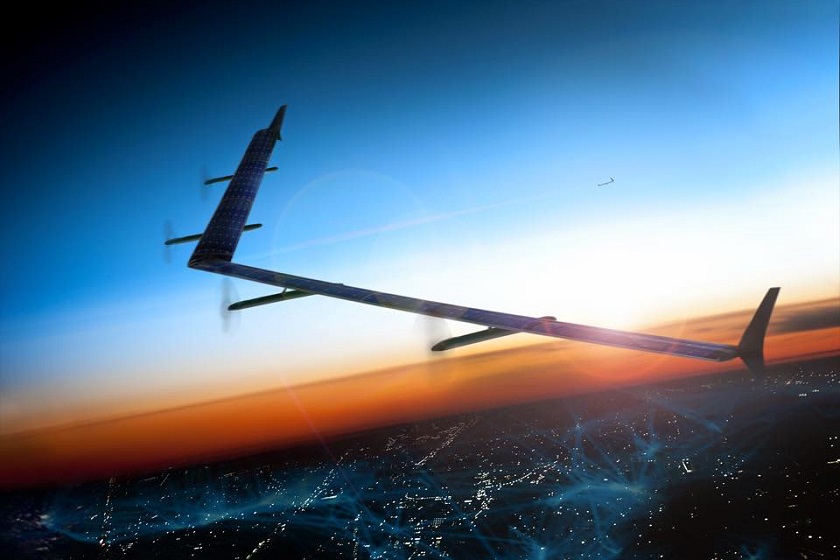
One of Zuckerberg's drones. I hope they don't fall on our heads. Photo: Facebook
In parallel with drone production, Facebook is mastering laser transmission technology FSO (Free Space Optics).
In theory, FSO will allow aircraft to exchange signals with each other, as well as with ground-based equipment, at higher speeds and with minimal energy consumption than traditional radio waves. But the technology is still in the testing phase, with engineers yet to address issues of precise beam guidance and avoidance of obstacles like clouds and other weather phenomena. The Connectivity Lab is allowing drones to be equipped with radio electronics as an alternate means of transmitting and receiving signals for when lasers cannot work. It is not yet clear how end users will connect to this system.
According to Facebook calculations, it is unprofitable to cover vast sparsely populated territories with drones. That is why the company expects to deliver Internet to such zones via satellites. One such device will be able to cover a huge area, and although the signal will be scattered, its quality should be enough for a relatively small number of users. While the initiative is far from being realized, as well as the project with drones, and exists, by and large, only in the plans of the company. Now Facebook is looking at two satellite options: low-orbit satellites for 160-2000 km altitude and vehicles for geosynchronous orbit located 35786 km from the surface.
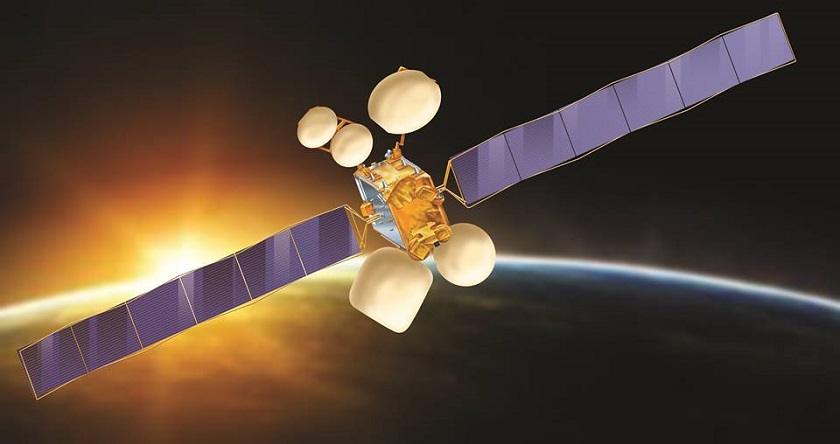
And this is the Zuckerberg satellite concept. Photo: Facebook
Each option has its own strengths and weaknesses. Low-orbiting satellites are located lower, and therefore exchange signals with them faster. But they don't travel at the same speed as the Earth rotates on its axis, so groups of such satellites are needed to maintain stable coverage. As for the satellites in geosynchronous orbit, they move along with the planet's rotation, always staying over the areas assigned to them. Thus, one such spacecraft is enough to maintain stable coverage of the territory assigned to it. At the same time, due to high altitude, the signal is not so fast. To improve efficiency of data transfer Connectivity Lab is studying the prospects of introducing FSO laser technology not only for drones but also for satellites.
In October, Zuckerberg reported that Facebook and French satellite operator Eutelsat are working together to launch AMOS-6, the first satellite for the Internet.org project. The satellite is still being designed, but it should be launched into geosynchronous orbit as early as 2016. The partners plan to provide Internet coverage for West, East and Southern Africa.

Development of AMOS-6 is in full swing. Photo: Facebook
It will take years for Facebook to realize its plans on a global scale. The company has to not only bring the new technology to its fruition but also solve a host of organizational issues. For example, according to the forecasts of Connectivity Lab, it will take 5-7 years just to regulate the radio frequencies for data exchange. With lasers, it is likely to be even more difficult.
OneWeb and SpaceX
Facebook is not the only player on the market that is openly talking about launching internet satellites into low orbit. At least two other companies are in play: Greg Wyler's OneWeb, a guy with vast experience in space telecommunications, and SpaceX of famed Ilon Musk. While these organizations have a lot in common, each has different strategies, technologies and business models.
At the beginning of the year notorious entrepreneur Richard Branson reported Qualcomm and his own company Virgin Group plans to invest 2 billion dollars in the Internet project OneWeb. Together they intend to launch 648 miniature satellites into space (more than the total number of currently active orbiters) to envelop the planet in a global network. Thanks to new technologies these satellites will be four times lighter than standard ones: about 110 kg against 450 kg. It is planned to deliver them into orbit with the help of compact LauncherOne carrier rockets, launching them from White Knight Two. Both types of vehicles will be provided by Virgin Galactic, a subsidiary of the Virgin Group. According to Branson, such technology will provide "much more efficient" delivery than the cumbersome rockets of the past. In June, aircraft maker Airbus joined the project , taking over production of satellites for OneWeb. The first fruits of their collaboration are expected to be in orbit in 2018.
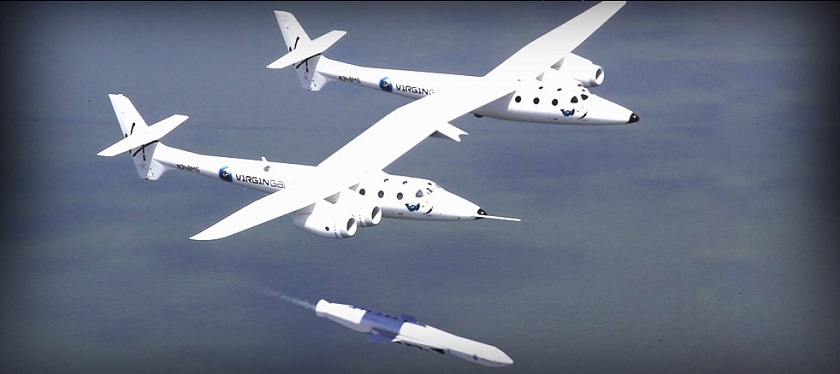
White Knight Two aircraft and launcher LauncherOne in all its glory. Photo: Virgin Galactic
Wyler's company is going to expand the coverage of traditional Internet service providers, providing them with paid access to its satellite system. End users will be able to connect their smartphones, computers and other devices with wireless terminals. The terminals will pick up the signal from the satellites and convert it into LTE, 3G or WiFi. OneWeb promises to make the terminals inexpensive, convenient and easy to use. Users will be able to mount them on rooftops and cars on their own, choosing models with solar panels and batteries included. According to Wyler, , the terminals will offer bandwidth of 50 Mbps with a latency of 30 ms. The OneWeb satellite system is expected to go live in 2019.
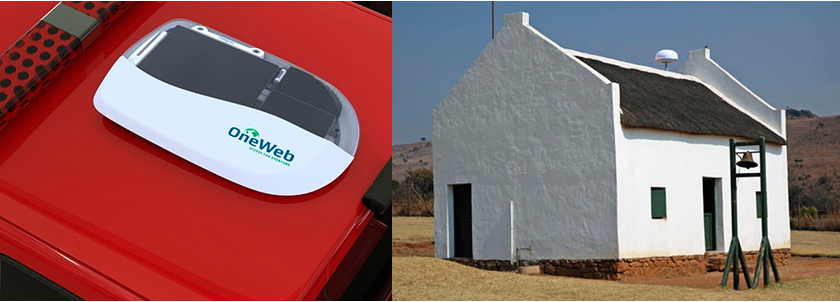
Custom terminals to connect to the satellite network. Photo: OneWeb
Almost simultaneously with OneWeb announcement SpaceX disclosed its plans regarding satellite internet. Ilon Musk told reporters from Bloomberg that his company would like to implement a similar project but with an even greater scope: $10 billion would be required and the first results should not be expected before 2020. In January Musk announced intention to launch 4,000 satellites and reported receiving $1 billion in development funding from Fidelity and Alphabet. On June 10, SpaceX requested permission from the U.S. government to launch 6-8 test satellites, scheduled for 2016, to test the performance of the antennas. As a space technology manufacturer, SpaceX will be able to launch satellites with its own hardware. The company is working on reusable rocket technology, which should make delivery to orbit significantly cheaper.
SpaceX plans to build wireless terminals to connect consumers to the satellite system as well. Presumably, their cost will be $100-$300. But apparently, plans to sell its services not to local providers, where OneWeb is aiming, but to end users. In theory, customers will get "low-cost, high-speed" Internet access. "We're focused on creating a global communications system that could be larger than anything known today," Musk told Bloomberg Businessweek. The founder of SpaceX is a man, in every sense, of cosmic ambition, who is not used to splurging on small things. The money gained from telecom services on Earth may, in the indefinite future, be used to build a colony on Mars.
Ilon Musk sees the ultimate goal of his project as providing Mars with internet.
Be that as it may, many obstacles remain between the entrepreneur and his dream. After the crash this June of a Falcon 9 rocket that could have delivered satellites into orbit in the future, SpaceX's official rhetoric has become more modest. Shortly after the failed launch, Musk expressed doubts about the success of Internet from space. "We want to be very careful with implementation so we don't exhaust ourselves," he said at the Space Station Research and Development conference in Boston. Following the SpaceX founder's caution was expressed by company president Gwyn Shotwell , calling the Internet project "speculative." Shotwell isn't sure if they can build a system efficient enough to compete with terrestrial providers.
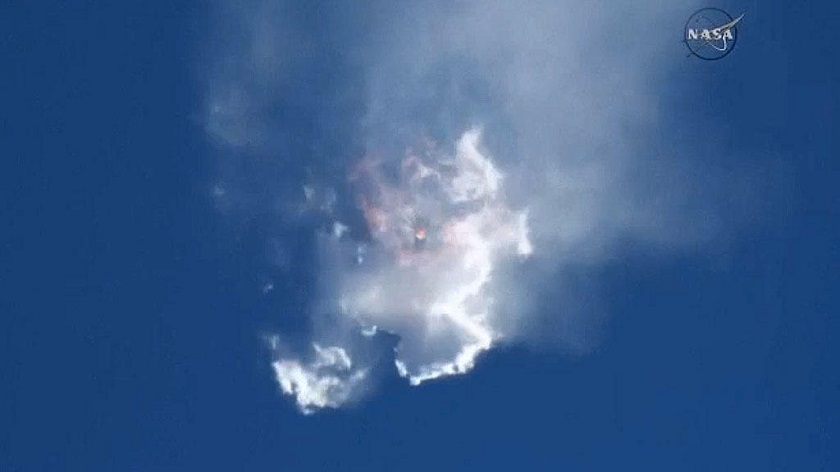
Houston, we have a problem: Falcon 9 rocket crashes. Photo: fragment of NASA broadcast
As we know, satellite internet has been around for some time. But due to high signal delays it is difficult to compare it with the services of traditional operators. Whether the listed companies will be able to change the rules of the game with the help of new technologies - the next space race will show.
